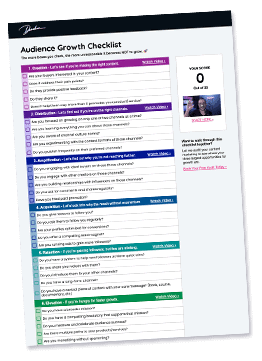I noticed a trend on YouTube recently where many vloggers are recording themselves while driving their cars around town. It seemed natural because we all see car angles like these in the movies all the time, but then it occurred to me that these are vloggers who are filming solo while driving! After researching online for a while, this is what I learned.
To vlog while driving a car you have to use a hands-free camera with a mount, and hit record before you begin moving. It also helps if you plan where you are driving and what you plan on talking about before you begin driving.
If you haven’t tried it before, you can learn more below to save time, stay safe, and stay within the legal limits of handling video cameras while driving.
Planning Your Car Vlog
While driving for many of us seems second nature now, it is easy to forget how complex operating a car can be. The amount of details you have to take into consideration each moment is quite high, so eliminating any unnecessary distractions through proper planning is a must.
WARNING: Vlogging while driving your car can be dangerous for you, your passengers, and others around you. There are, however, a few simple things you can do to protect yourself and others while still getting that shot you need for your vlog.
Here is a list of things you do can before you start vlogging so you don’t have to think about them while you are driving:
Plan Your Car Trip
You don’t need any surprises or confused moments while you are driving. Take a moment to plan out where you will be driving. Visualize the route you will take, which lanes you will drive in, what turns need to be made, and where you will park. I know that may seem silly, but taking 30 seconds to do this one thing will free up your mind from having to make those choices while you drive.
Get The Audience Growth Checklist 🚀
Your content deserves an audience. Find out how to get the reach it deserves.
Outline What You Want to Say
The other piece you will want to plan out is what you want to say to your audience. You don’t need to write it out word for word (reading a script while driving would be worse), but you should take a moment to outline the flow of the story or points you want to make. Writing down a few bullet points on paper or in an app will do.

Take a moment to write it down, read it, and rehearse it before you start the engine.
Prepare & Test Your Camera Rig
You do not want to be fiddling with your camera while you are driving, so everything needs to be ready to go. Set up the camera and mount beforehand and even do a test with you in the driver seat while the car is parked. It could make for a good rehearsal of your outline anyway.
Check to make sure the framing is what you want and that the mic is not obstructed. Check the battery life and all the camera settings to make sure everything is ready.
Press Record
Before you begin driving, press record. You should not touch or interact with your camera while you drive. You can edit out the unnecessary footage later if you need to.
Also, do not use your camera’s flip screen (if you have one) so you can see yourself. This can be illegal in many states. Frame the shot before you begin driving, so you can film with confidence without checking your framing every five seconds.

Equipment for Vlogging In a Car
There are a variety of ways to mount a camera in a car, but it does depend on the camera you have. Below I will outline what the most popular combinations of cameras and mounts.
GoPro
GoPro is the best camera to record yourself while driving. Its wide-angle lens is ideal and it is small enough to mount from a number of locations. You can stick one of the standard mounts right onto the dashboard or purchase one of a number of the number of car mounts that are made for the GoPro specifically.
Here are a few different ways you can mount a GoPro to your car:




iPhone or Android Phone
Using a smartphone is also a good camera to use for its size, wide angle lens, and the wide array of cheap mounts already made for the phone to stick to your dashboard or windshield. Be careful to check the laws below to see if it is illegal to use a phone while driving for your age and state. Even if you never touch the phone while you are driving a police officer could have reason to believe you did if the phone is out right in front of you.
Here are a few different ways others have mounted a smart phone to their car.

Point-&-Shoot Cameras
This is about as large as you want to use for vlogging in a car. They do make a few car mounts to either mount this to the windshield or to your dashboard.



DSLR or Mirrorless Cameras
A DSLR is getting large enough that it becomes an awkward piece to mount to your dash. Most vloggers I have seen use gaff tape to stick it onto the dashboard or use their gorilla pod to put the camera on the seat next to them. Either way, they are not ideal setups.
Film students who are using semi-pro gear will often purchase inexpensive car mounts to get realistic driving scenes for their videos. Mounts like the ones below.
Here are a few examples:

Professional Cinema Cameras
These mounts would be overkill and likely require special licensing to, private roads, or some other kind of deal to stay legal, but here are some examples of how the pros get realistic car shots of actors in their films.
Just for fun:



How to Vlog in Your Car Without Breaking the Law
When I considered recording myself while driving, I wondered if I would be breaking the law. The truth is, in some states and some gear setups it is possible that vlogging while driving could be illegal.
Is vlogging while driving illegal? Technically, vlogging while driving is not illegal, but many states DO have laws about cell phone use and distracted driving that vlogging could fall under depending on how you record yourself and manage the process.
To ensure you are not vlogging while driving illegally, check out this chart below.
Source: Insurance Institute for Highway Safety 2017.
The data from table above is not the most up to date information but does provide a primer. So if it currently says something is illegal it is likely still true. If it is not illegal it could have been put into law in the last few years. Google your state name and law like “car cell phone laws in _____ state” to find out.
Here are a few image maps to give the data a visual.





